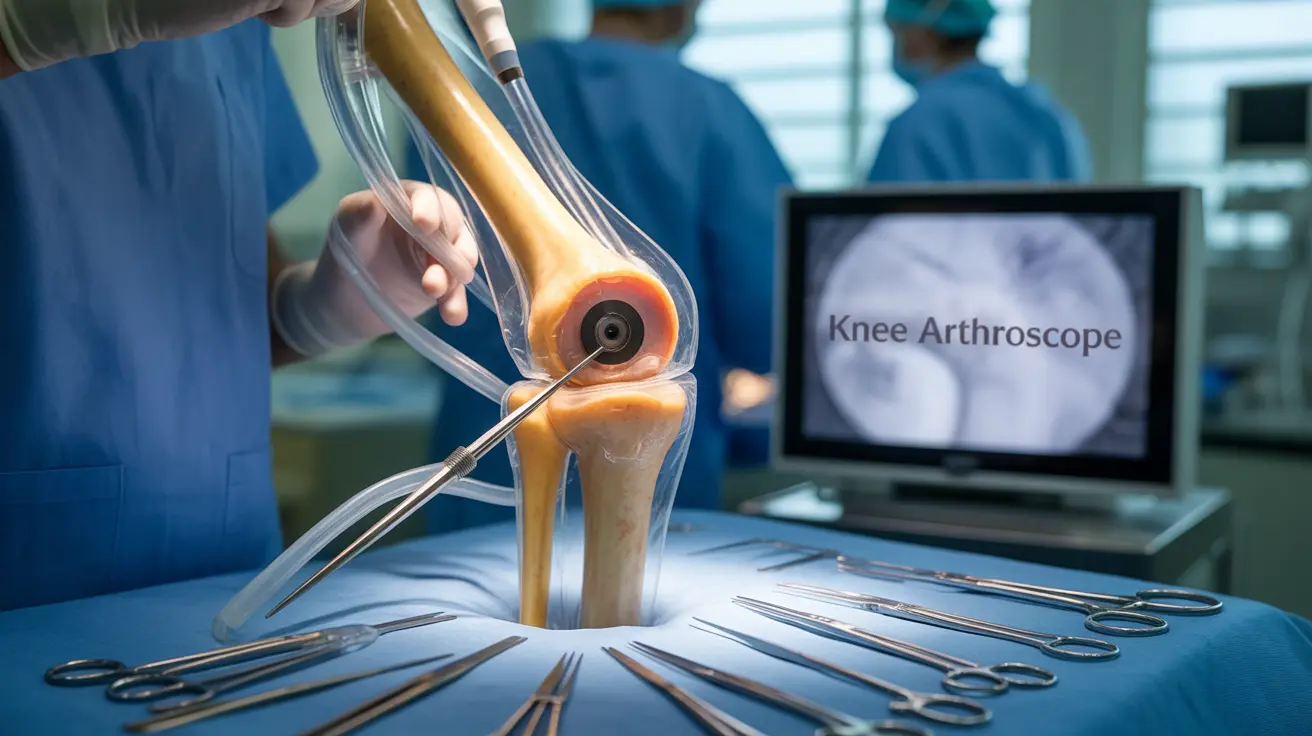Knee arthroscopy is a minimally invasive surgical procedure that allows orthopedic surgeons to diagnose and treat various knee conditions through small incisions. This modern surgical technique uses a tiny camera (arthroscope) and specialized instruments to examine and repair knee joint problems with greater precision and typically less recovery time than traditional open surgery.
Whether you're scheduled for knee arthroscopy or exploring your treatment options, understanding this procedure can help you make informed decisions about your knee health. Let's explore what knee arthroscopy involves, its benefits, and what to expect during recovery.
Common Conditions Treated with Knee Arthroscopy
Knee arthroscopy can effectively diagnose and treat numerous knee conditions, including:
- Meniscus tears
- ACL (anterior cruciate ligament) injuries
- Cartilage damage
- Loose bodies in the joint
- Synovitis (inflammation of the joint lining)
- Patella (kneecap) problems
This procedure is particularly valuable when MRI scans or physical examinations aren't sufficient to determine the full extent of knee damage.
The Knee Arthroscopy Procedure
Before Surgery
Prior to knee arthroscopy, your surgeon will conduct a thorough evaluation, including:
- Physical examination
- Review of medical history
- Discussion of current medications
- Pre-operative testing as needed
- Fasting instructions for the day of surgery
During the Procedure
Knee arthroscopy is typically performed under general or regional anesthesia. The surgeon makes small incisions (portals) around the knee to insert the arthroscope and surgical instruments. The procedure usually takes 30 minutes to two hours, depending on the required repairs.
Recovery Process and Timeline
Recovery from knee arthroscopy varies based on the specific procedure performed and individual factors. Most patients can expect:
Immediate Post-Surgery Period
- Initial recovery in a recovery room for 1-2 hours
- Same-day return home in most cases
- Use of crutches or walking aids as needed
- Ice therapy to manage swelling
- Pain medication as prescribed
First Few Weeks
During the initial recovery phase, patients typically focus on:
- Gradually increasing weight-bearing activities
- Beginning physical therapy exercises
- Managing swelling and discomfort
- Keeping incision sites clean and dry
- Following specific post-operative instructions
Physical Therapy and Rehabilitation
Physical therapy plays a crucial role in recovery after knee arthroscopy. A structured rehabilitation program typically includes:
- Range of motion exercises
- Strengthening exercises
- Balance and coordination training
- Gradual return to activity-specific training
- Home exercise program
Frequently Asked Questions
What conditions can knee arthroscopy diagnose and treat?
Knee arthroscopy can diagnose and treat various conditions including meniscus tears, ACL injuries, cartilage damage, loose bodies in the joint, synovitis, and patella problems. The procedure is particularly effective for confirming diagnoses and performing repairs that don't require full joint replacement.
How long does it take to recover from knee arthroscopy surgery?
Recovery time varies depending on the specific procedure performed. Most patients can return to desk work within 1-2 weeks, light physical activities within 3-6 weeks, and more strenuous activities within 2-3 months. Complete recovery typically takes 4-6 months.
What are the risks and potential complications of knee arthroscopy?
While knee arthroscopy is generally safe, potential risks include infection, blood clots, bleeding, nerve or blood vessel damage, and persistent pain or stiffness. These complications are relatively rare, occurring in less than 1% of cases.
What should I expect during and immediately after knee arthroscopy surgery?
The surgery typically lasts 30 minutes to 2 hours under anesthesia. Immediately after, you'll spend time in recovery before going home the same day. You may experience some pain and swelling, which can be managed with medication and ice therapy. You'll likely need crutches initially.
How can physical therapy help after knee arthroscopy, and when can I return to normal activities?
Physical therapy helps restore strength, flexibility, and function through targeted exercises. It typically begins within days of surgery. Return to normal activities is gradual: driving within 1-2 weeks (if surgery was on your right knee), light exercise at 3-6 weeks, and sports activities between 1-6 months, depending on your procedure and progress.




